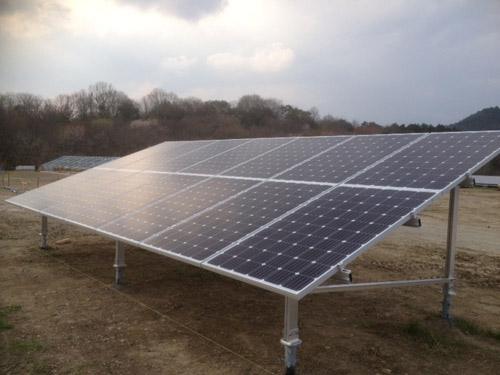In order to reduce costs, increase efficiency, and increase lifespan more effectively, a new generation of solar power generation technology has begun to introduce organic materials and nanotechnology. Including dye photosensitizing, photochemical batteries, polymer batteries, nanocrystalline batteries and so on. Dye-sensitized solar cells (DDSC) are characterized by cheap materials and can be produced through a simple process at a low temperature. The key point is that they have the advantages of flexibility, colorfulness and light transmission, and can be directly integrated into the architectural design to save energy. While generating electricity, it can also add more ideas to buildings.
The semi-transmissive properties of dye-sensitized solar cells are ideally suited for use in window panels in office buildings and can be used to simultaneously generate power, heat insulation, and sunshade functions.
A dye-sensitized solar cell is composed of a glass or thin film substrate, a transparent conductive film, a TiO2 photoelectrode, a dye, an electrolyte and a solvent, and a transparent conductive film, a platinum catalyst counter electrode, etc. On a substrate with a conductive film, TiO2 is formed. Nanoparticles were applied as a paste and sintered to a semiconductor photoelectrode at a temperature of 450°C. The counter electrode is formed by depositing platinum on the transparent conductive film. The thickness of TiO2 layer is about 10μm, and the nanometer holes can make the effective surface area more than 1000 times of the surface area of ​​the appearance substrate, so that TiO2 can absorb more dyes, so as to absorb more light sources and increase the conversion current value.
In practical applications, the semi-transmitting properties of dye-sensitized solar cells are very suitable for window materials in office buildings and can be used for synchronous generation of power, thermal insulation, and sunshade functions. In the production process, since the red, yellow, and blue three-color materials can be blended, a variety of colors can be produced, and the outer shape can be arbitrarily cut or even flexed. High degree of freedom. With low manufacturing costs and conversion efficiency of up to 10%, it is also possible to directly integrate building design. It is therefore expected to be one of the promising solar power generation technologies.
In addition to its use in building exterior walls, roofs and glass for power generation purposes, dye-sensitized solar cells can generate electricity by using only normal indoor light. This is another option for the auxiliary power supply of electronic products. For example, it can be built directly in On mobile phones, watches, and other products that use less power, or an external folding charger. Another important application is the combination of textiles, coating this dye-sensitized solar material on clothes to carry portable power, and it is expected that there will be great market potential for mobile power applications in the future.
Solar Ground Mounting System includes Ground Screw Mounting System and Concrete Base Mounting System. Ground Screw mounting system is consist of ground screw and U shape steel and the main material is Q235, surface treatment is hot-dipped galvanized and the useful life is 25 years. Concrete base mounting system is applicable for the array system on the open fields and different foundation solution , it will have different install accessories, such as concrete with bolt and ground screw, the material of this system is hot dipped galvanized steel and anodized aluminum alloy with great anti-corrosive suitable for outdoor using.

Solar Ground Mounting System, Ground Screw Mounting System, Concrete Base Mounting System
Hebei Honde Industrial Trade Imp&Exp Co., Ltd. , https://www.groundscrewpile.com
![<?echo $_SERVER['SERVER_NAME'];?>](/template/twentyseventeen/skin/images/header.jpg)